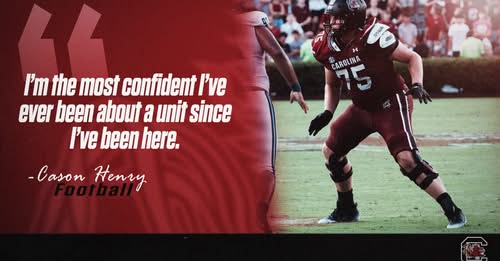The role of an offensive line coach in football is often underestimated by casual fans who are drawn more to the highlight reels of running backs, quarterbacks, and wide receivers. But for those who understand the game deeply, it is the offensive line that makes everything else possible. When Lonny Teasley, offensive line coach, highlighted the effort his group put into the offseason, he wasn’t just offering empty praise. He was drawing attention to the foundation of an entire football program, because the offensive line dictates whether an offense thrives or struggles. His words—emphasizing strength, body transformation, and refinement of technique—reflect not only the physical demands of the position but also the mental dedication that separates average lines from dominant units. In exploring the significance of his statement, we uncover the broader context of player development, program identity, and the unseen grind that shapes a football team before the season even kicks off.
The offseason in football is a paradox. On one hand, it’s the only real time players have to heal, recharge, and step away from the weekly grind of practices and games. On the other hand, it is the most important developmental period for growth, both physically and technically. For offensive linemen, whose jobs demand peak strength, stamina, and coordination, the offseason isn’t about rest—it’s about transformation. Teasley’s comments highlight how his players embraced this challenge. In the weight room, they pushed to add muscle mass while also focusing on flexibility, because a lineman cannot simply bulk up; he must be able to move laterally, maintain balance, and explode off the snap. When Teasley said they “changed their bodies,” he was describing a process of sculpting athletes into more efficient machines, capable of withstanding the grueling trench warfare that happens in every game.
Strength gains are always measured, of course, in the numbers that come with bench presses, squats, and deadlifts. But the true test of an offensive lineman’s offseason isn’t just how much weight he can move in a gym; it’s whether that strength translates into leverage on the field. Football is, at its essence, a game of inches, and nowhere is that truer than in the battles between linemen. A stronger, more technically sound offensive line can extend a running back’s hole by half a second or give a quarterback just enough time to step into a throw. The offseason grind is about building those small advantages that, over the course of a season, separate winning teams from struggling ones. Teasley’s players weren’t just lifting weights for numbers’ sake—they were preparing their bodies to withstand four quarters of nonstop collisions against equally determined defenders.
Technique, the other major aspect Teasley praised, is where the artistry of offensive line play shines. Strength without technique often leads to penalties, missed assignments, and chaos in the pocket. Footwork must be precise, hand placement must be calculated, and awareness of defensive schemes must be sharp. During the offseason, linemen spend countless hours refining their stances, practicing kick-steps for pass protection, and drilling coordination as a unit. Teasley’s emphasis on improving technique shows that his group wasn’t just trying to out-muscle opponents; they were striving to master the technical nuances that allow an offensive line to operate as one cohesive body. When five linemen move together with perfect timing, the offense becomes nearly unstoppable. That requires discipline and mental repetition, qualities that can only be sharpened in the months when there are no fans in the stands and no cameras on the sidelines.
The transformation Teasley spoke of also points to the intangible side of offensive line development—chemistry. No matter how talented individuals may be, an offensive line’s effectiveness hinges on trust and communication. Linemen must anticipate each other’s movements, understand defensive shifts as a collective, and know instinctively when to double-team or pass off a rusher. Offseason work builds this chemistry. Players spend hours in film sessions, weightlifting groups, and informal drills, building bonds that translate to seamless execution during games. Teasley’s praise suggests that his group not only improved physically but also coalesced as a unit, something that often determines whether an offense thrives in the clutch.
To understand why Teasley’s remarks are significant, one must also consider the pressures of modern football. Defenses have never been faster, more creative, or more aggressive than they are today. Defensive coordinators design complex blitzes and stunts to confuse offensive lines and disrupt timing. For an offensive line to succeed against such schemes, players must be at peak conditioning and mentally sharp. By focusing on body transformation and technique, Teasley was ensuring his players would not only survive but potentially dominate these matchups. In a sense, the praise he offered wasn’t just a compliment—it was an early warning to future opponents that his offensive line had taken the offseason seriously and was preparing to be a difference-maker.
Fans often measure success by the playmakers. A quarterback who throws for 300 yards or a running back who racks up 150 yards on the ground garners the headlines. But hidden in those numbers is the work of the offensive line. Without pass protection, a quarterback’s vision collapses into panic. Without run blocking, even the most talented back becomes bottled up. Teasley’s emphasis on offseason growth reminds us that behind every explosive play lies a silent but critical foundation built by linemen who rarely hear their names called on broadcasts. By praising their effort, Teasley was shining a light on the unsung heroes of the sport and giving credit where it is often overlooked.
There’s also a motivational element to consider. When a coach publicly praises his players for offseason work, he isn’t merely stating facts—he’s reinforcing a culture. Football programs are built on culture, and culture is reinforced by recognition. By highlighting their dedication to getting stronger and refining technique, Teasley was setting a standard for future players. He was essentially saying: this is what it looks like to buy in, to commit to the program, to become better every day. That recognition becomes fuel for players, motivating them to push even harder, knowing their efforts are seen and valued. It also sets an example for incoming recruits or younger teammates, showing them the path to earning respect within the team.
The deeper implication of Teasley’s statement is that his offensive line is prepared to carry the weight of the season ahead. Football seasons are grueling, filled with ups and downs, and the durability of a team often comes back to its offensive line. Injuries, fatigue, and midseason slumps are inevitable. Teams with strong, well-conditioned lines weather those storms more effectively. By emphasizing the offseason work his group put in, Teasley was expressing confidence that his players had laid a solid foundation to withstand adversity. Stronger bodies mean fewer injuries. Better technique means fewer mistakes under pressure. Together, these qualities create resilience—a trait every championship-caliber team needs.
It is worth noting that offensive line development also reflects the evolution of the sport itself. In decades past, linemen were primarily seen as massive walls whose job was to bulldoze defenders. Modern football, however, demands versatility. Offensive linemen must be equally adept at pass blocking in spread offenses and run blocking in zone schemes. They must handle edge rushers who are as fast as wide receivers and interior linemen who are as powerful as weightlifters. This evolution requires not just size but agility, conditioning, and refined mechanics. Teasley’s praise of his group’s body transformations indicates they embraced this modern expectation, working not just to get bigger but also to get quicker, leaner, and more versatile.
Looking ahead, the real measure of this offseason work will be seen on game days. Will the line consistently protect the quarterback? Will they open lanes for the running backs? Will they avoid costly penalties and mental breakdowns in key moments? These are the questions fans and analysts will ask. But regardless of how the season unfolds, the foundation built during the offseason will remain invaluable. For players, those hours of sweat in the weight room and repetition on the practice field are investments that pay off not only during the season but across their entire careers. Coaches like Teasley understand this deeply, which is why he made a point to highlight it. His statement was as much about appreciation as it was about sending a message: the work done in silence is the work that makes the difference when the lights are brightest.
In the end, Teasley’s words capture the essence of football preparation. It is not the highlight-reel plays or the roar of the crowd that define a team’s success—it is the unseen grind, the transformation of bodies and sharpening of skills, that determines whether a team rises or falls. His offensive line, according to him, embraced that reality. They worked hard, they changed their bodies, they refined their craft. In doing so, they not only prepared themselves to compete but also embodied the values of discipline, resilience, and teamwork that lie at the heart of the sport. When fans watch the upcoming season unfold, they may see touchdowns and big plays, but behind each one will be the invisible footprint of linemen who committed to becoming stronger, sharper, and more technically sound.



